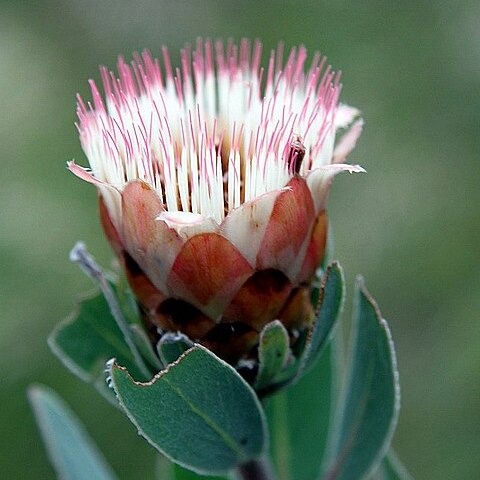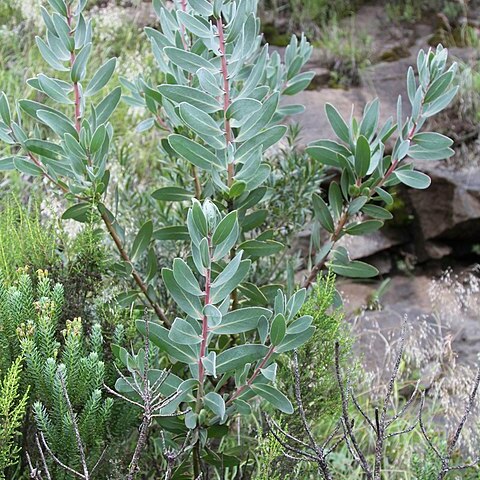Shrub, erect, single trunk, 2-5 m high. Leaves curved upwards, elliptic to lanceolate, 50-110 x 15-35 mm, woolly hairs, later glabrous, acute. Flower head oblong, 55-70 mm long, 30-40 mm in diam. Involucral bracts 5-or 6-seriate, pink to white, imbricate, outer surface hairy, margins hairy; outer series ovate, acute, 10-15 x 7-10 mm; inner series oblong, rounded, 35-40 x 8-12 mm, apex bending outwards, bearded. Flowers 50-60 mm long, straight, tube 8-10 mm long, tips hairy; style 55-60 mm long, straight, tip bending outwards, pink; pollen presenter 8-10 mm long, thread-like, bent at base. Flowering time Jan.-Mar.
Large, upright, bushy shrub or small tree, up to 5 m high. Leaves pubescent when young; blade elliptic to narrowly ovate, 50-110 x 15-35 mm. Flowers: head oblong to campanulate, 30-40 x 55-70 mm; involucral bracts carmine, pink or creamy white, inner bracts oblong, pubescent, innermost bracts with tips bending outwards; perianth 50 mm long, tube fulvously hairy within, apices prominently crinite with silky wavy hairs; Jan., Feb.
Large shrub or tree to 5 m. Leaves elliptic-oblanceolate, densely hairy when young. Flower heads oblong-obconic, 30-40 mm diam., involucral bracts cream-coloured to pink, glabrous or silky, fringed, inner recurved at tips, style ± 55 mm long.
Large, upright, bushy shrub or small tree, up to 5 m high. Perianth with apices prominently crinite with silky wavy hairs. Involucral bracts carmine, pink or creamy white. Innermost bracts with tips bending outwards.



